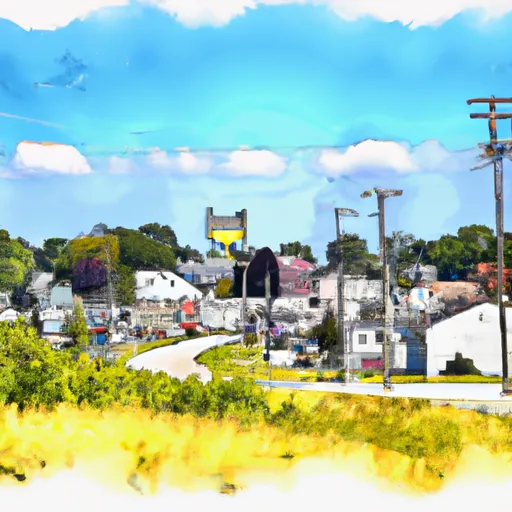°F
°F
mph
Windspeed
%
Humidity











Stetsonville is a small town located in Taylor County, Wisconsin. It experiences a humid continental climate, characterized by warm summers and cold winters. The average annual temperature is around 45°F (7°C), with July being the warmest month and January the coldest. Precipitation is relatively evenly distributed throughout the year, with an average annual rainfall of 31 inches (79 cm) and 52 inches (132 cm) of snowfall.
The hydrology constituents in Stetsonville are primarily influenced by the nearby Jump River, which flows through the town. The river serves as a vital water resource for the community and offers opportunities for fishing and canoeing. The surrounding landscape is dotted with numerous lakes and ponds, providing additional recreational activities like boating and swimming during the summer months.
Outdoor enthusiasts will find ample opportunities to explore the natural beauty of Stetsonville. The area boasts several public parks and nature reserves, offering trails for hiking, biking, and wildlife observation. In the winter, these trails transform into cross-country skiing and snowshoeing routes. Additionally, the town hosts various community events and festivals throughout the year that celebrate the outdoor spirit, attracting visitors and locals alike.
Weather Forecast
Stetsonville receives approximately 833mm of rain per year, with humidity levels near 84% and air temperatures averaging around 6°C. Stetsonville has a plant hardyness factor of 4, meaning plants and agriculture in this region thrive during a short period during spring and early summer. Most plants will die off during the colder winter months.
Regional Streamflow Levels
67
Cubic Feet Per Second
5
Cubic Feet Per Second
5
Cubic Feet Per Second
61
Cubic Feet Per Second
Nearby Camping
| Camping Area | Reservations | Toilets | Showers |
|---|---|---|---|
| Fairview Riverside State Park | |||
| Greenville - Lake Wappapello | |||
| Atwood Water Park | |||
| Percy Quin State Park | |||
| Lefleurs Bluff State Park | |||
| Bayou Segnette State Park |



